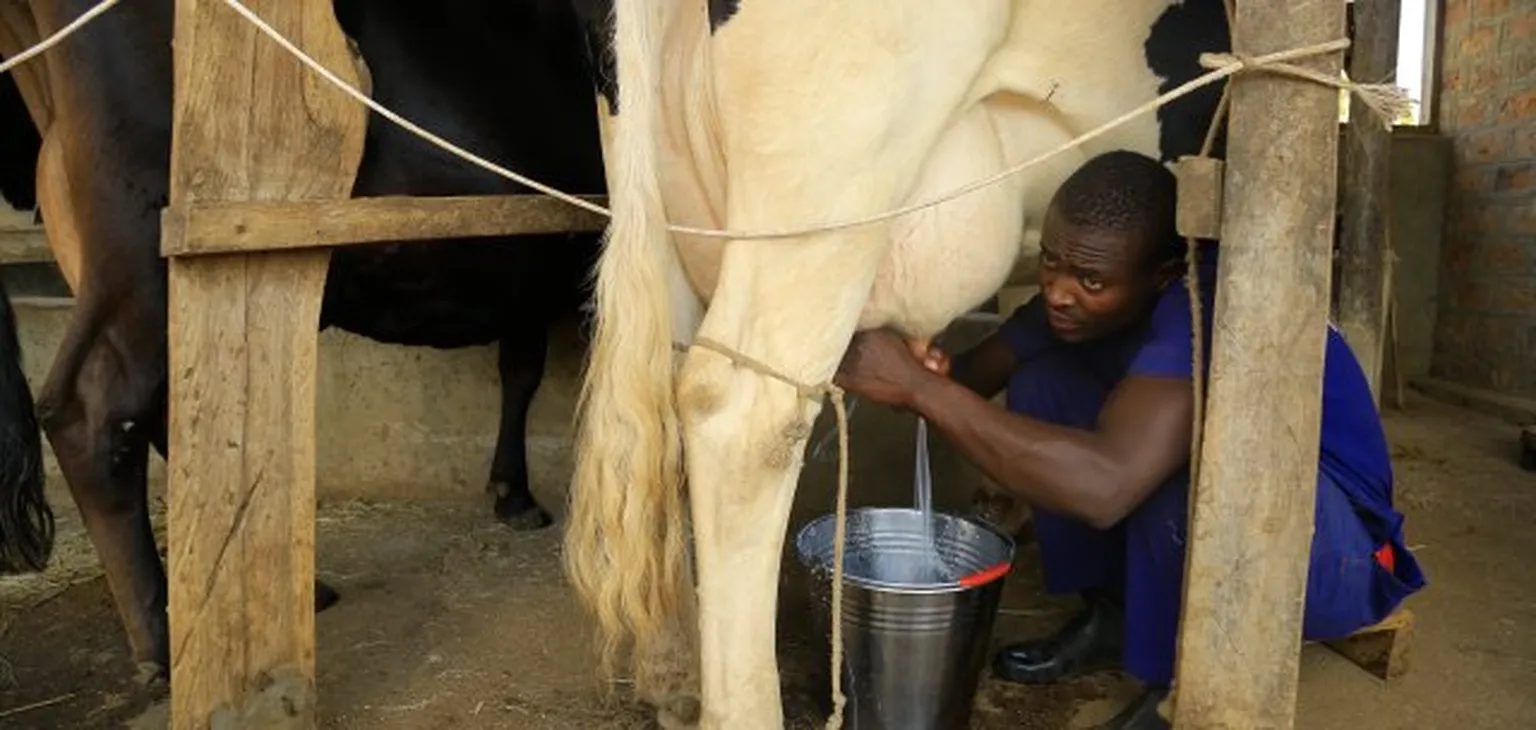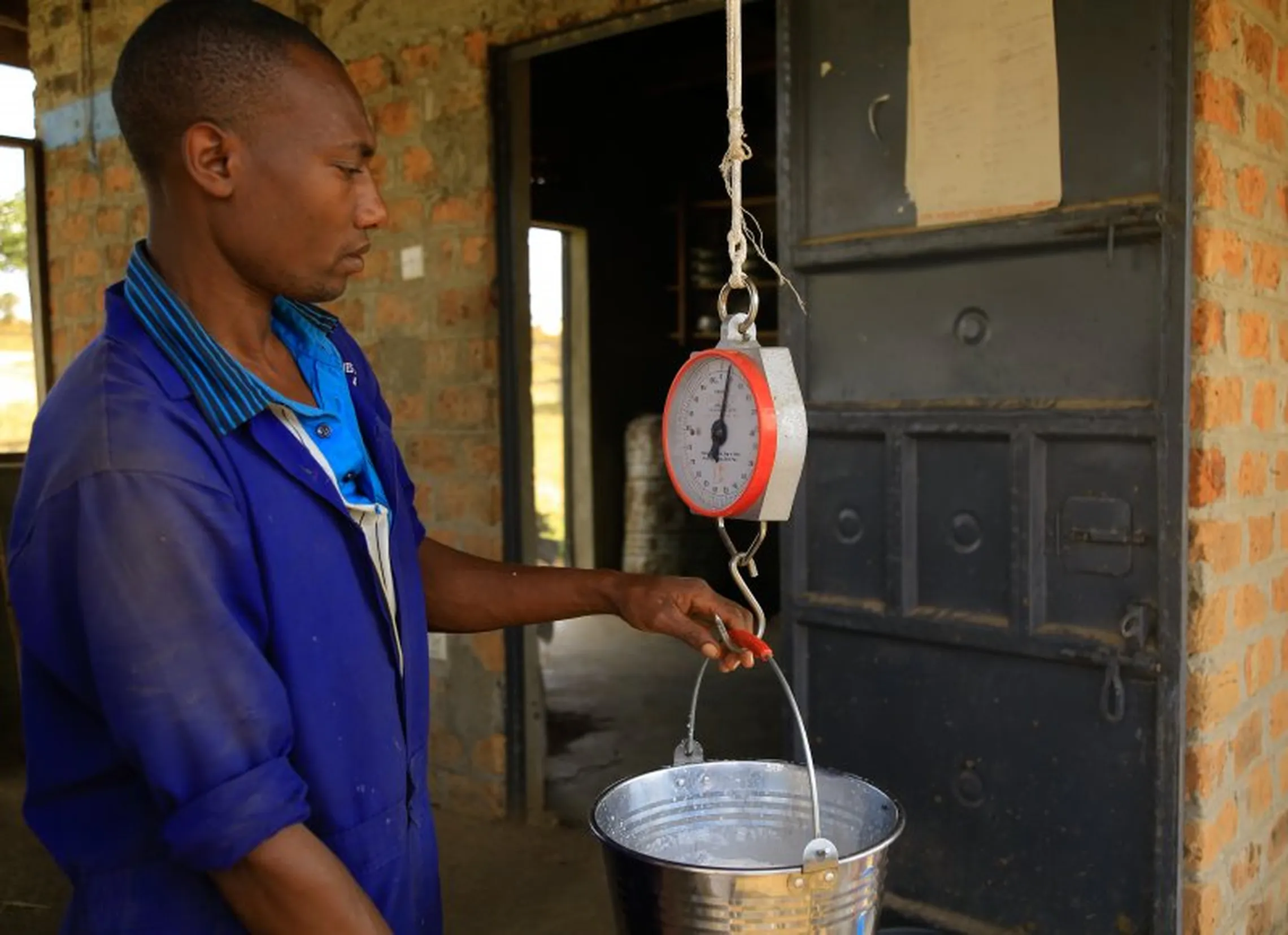Uganda poised to become the largest dairy exporter in Africa.

SNV's Rinus van Klinken shares his thoughts on why dairy may soon top Uganda's export products after coffee.
The dairy sector is slowly inching its way into Uganda’s top exports, next to coffee and tea. The pull of the exporters is largely responsible for this transformation. In the last 10 years, the value of milk and milk products exported from Uganda has increased astronomically from US$5 million in 2008 to US$130 million in 2017. Dairy exports in 2017 amounted to approximately 300 million litres, which is more than 10% of the total milk produced in Uganda; currently estimated at 2.5 billion litres per annum.
The dairy sector is currently growing at an average of 7% per annum, with some areas in South Western Uganda averaging at 10 – 15% per year. The growth in the sector can be attributed to favourable natural conditions as well as dairy development programmes instituted by government and development partners. However, while government and donors have consistently given support to the dairy sector, in some instances directly through investments in infrastructure like milk coolers, and indirectly through construction of roads to ease transportation of milk; these interventions did not create the transformation that is being witnessed currently. Liberalisation of the market created space for the emergence of small and medium-scaled companies that catered to the domestic market but their influence remained limited. Even the privatisation of the National Dairy Corporation did not bring any drastic change. The government monopoly was replaced by the dominance of one processor (Brookside) in the market. This situation only changed with the establishment of two processing factories in Southwestern Uganda by Pearl Dairies and Amos Diaries. Pearl Dairy established a factory in Mbarara, and quickly captured a market by exporting milk powder and other products to a wide variety of countries, including the Arabian Gulf, Nigeria and Japan. The second processor, Amos, focused on extracting casein out of milk and exporting this to the American market for industrial use. Together with the medium-scale processors and exports by Brookside to its Kenyan mother company, Uganda’s dairy export earnings sky rocketed.

Milk being weighed in one of the dairy farms in Mbarara district
But overreliance on export carries its own risks given the inequalities in the sector with the domestic market suffering from taxation on processed milk. Some would even argue that government is shooting itself in the foot by charging VAT on safe, processed milk which it is trying to promote, while leaving the sale of unsafe, raw milk untaxed. This increases the gap in price between processed and raw milk, and suppresses safe milk consumption, thus hindering economic growth of the sector and at the same time potentially exposing citizens to health hazards from drinking unprocessed milk Furthermore the limited local market increases vulnerability to changes in the export market, especially as export is currently dominated by just three processing companies. Any change in the fate of one of the three will directly affect the sector, and ultimately Uganda’s economy.
Almost all the milk for export comes from the southwest, mainly Kiruhura District and the area around Mbarara. The dominance of the southwestern milk shed is not by accident. It is an outcome of deliberate effort by dairy farmers who are investing in improved management, water for production and supplementary feeding for their dairy cows. The response of dairy farmers in Southwest Uganda to favourable market conditions has the potential to further increase production, even double it within the next five years. With the world dairy market still poised for further growth, and local conditions favouring production at relatively low prices, exports are likely to further increase in the future. Based on current market predictions, dairy exports from Uganda are likely to reach US$150 million in 2018. South Africa has over the last three years exported between US$ 130 and 150 million per year in dairy products, making it the largest dairy exporter in the whole of Africa by far. However Uganda is slowing inching into the top dairy exporting countries in Africa. If headlines start appearing soon, proclaiming Uganda as the largest dairy exporter on the African continent, remember you read it here first.
Rinus van Klinken is project manager of the The Inclusive Dairy Enterprise (TIDE) project in Uganda.